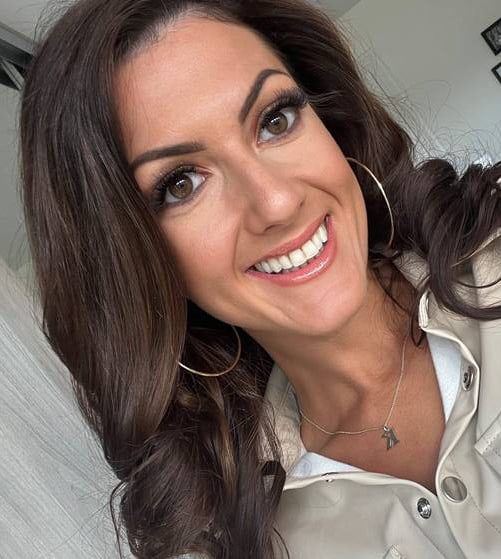Buy to Let
- Access to competitive mortgage rates and some you can't get direct
- Experts in Mortgages, Investments, Protection & Pensions
- We work with a variety of lenders and providers
Some buy to let mortgages are not regulated by the Financial Conduct Authority
What's On This Page?
Get In Touch
Home » Buy to Let


Buy to Let Mortgage
Joanne Markham and Kathryn Haycock talk us through a Buy to Let mortgage.
What is a Buy to Let mortgage and how does it differ from a regular mortgage?
A Buy to Let mortgage is a non-regulated mortgage, whereas a residential mortgage is regulated. Residential borrowing is based on affordability: your income and expenditure, while a Buy to Let mortgage is based on the rental the property will achieve.
A couple of lenders will ‘top slice’ – if there’s any surplus personal income, they can use that to support the Buy to Let mortgage. But nine times out of ten lenders use the rental income to calculate the maximum loan amount that you can borrow.
What are the eligibility criteria for obtaining a Buy to Let mortgage?
A couple of years ago it was different to how it is now. It used to be that you had to be 25 and you had to earn over £25,000. You had to be a homeowner – an owner occupier. It’s changed now and it’s more open. You don’t have to be over 25. There’s probably a lender out there for the majority of customers.
So if it’s something that you’re interested in, it would definitely be worth speaking to a broker and looking into your options. It’s not as strict as it was.
How much deposit is usually required for a Buy to Let mortgage?
It’s usually 25%. We’re recording in September 2023 and these are difficult times at the moment because of current rates.
Buy to Let loan amounts are based on the rental that the property will receive. That gives you a maximum loan available. With an average two bed terraced house or flat with a rental income of, say, £650 a month, if you want to borrow £80,000 that would normally work every time.
But with what’s happened with rates, it’s more difficult at the moment. You might need more deposit than you would have before the rate increase. We’re hoping things will settle in the next six to twelve months.
But as a rule, work on 25%. A few lenders will do 20% but in current times that’s going to be difficult.
Should I choose interest only or repayment on a Buy to Let mortgage?
On a Buy to Let mortgage you do have the option to just go interest only with your payments, or you can have a repayment mortgage. Interest only is more available on Buy to Let than on residential.
It depends on the customer’s circumstances, but generally an interest-only mortgage means you can save the surplus rent. You can save up a pool of money in case you needed to update the property or to cover rental voids if the property was empty.
You’re not going to be paying off that mortgage if it’s on interest only, so it depends on the customer’s plans with the property. Is it an investment, where you want to get an income from the rent? Or would you prefer to put it on a repayment basis to reduce that loan and ultimately pay that mortgage off?
What are the current interest rates for Buy to Let mortgages?
It’s a difficult question because we’ve got so many different variations. Unlike a few years ago, First Time Buyers aged under 25, or people with no income can now get a Buy to Let mortgage with certain lenders. People with bad credit can get Buy to Let mortgages – but all at different rates.
Deposit is a factor too – it works the same as a residential. If you’ve got a 50% deposit you’re going to get a much better rate than if you had a 10% deposit.
Rates are quite high at the moment and you’ve also got to allow for something called a stress rate as well – it’s built in with the affordability. It’s not something I would really like to put a figure on, because tomorrow it could be completely different.
Can you explain the concept of rental coverage and how it affects Buy to Let mortgage applications?
Basically it means that the rent is a factor in how much you can borrow against a Buy to Let property. The market has changed so much in the last couple of years – it never used to be determined by the rent only. You just needed that 25% deposit and the rent really wasn’t a massive factor.
Now, the rent on that property is central to how much you can borrow. If the rent is lower than a certain amount you may not be able to borrow 75% of the property value. You may have to put in more than 25% deposit.
It also differs between basic rate taxpayers and high rate taxpayers – you’ve got to build extra percentages into the rental to make it work.
Are there any specific fees associated with Buy to Let mortgages that borrowers should be aware of?
There are fees with all mortgages and Buy to Let products are more expensive than residential. There are fewer Buy to Let mortgages on our sourcing system and they tend to have large fees of 2% or 3%.
That could amount to £2,000 to £3,000 on top of the mortgage, or more. Those lenders will offer you a lower rate, but it would have to be a big mortgage to make it worth your while to pay that fee.
A broker will work out cost effectiveness for you. It’s not just about the rate or the fees alone. We do an overall cost comparison. If it’s a two year fixed or five year fixed deal we will work out the total costs for you over that timeframe.
Aside from fees, you’ve got extra stamp duty on a Buy to Let. If it’s a second property, you’ll pay a higher rate of stamp duty. A lot of people don’t realise that you pay stamp duty from the first pound on Buy to Let – it’s not like residential where the first £250,000 is exempt.
You will probably also have broker fees. If you choose property management, where a lettings company manages the rental for you, they will charge you 10% to 20% of the rent payment. So if the rent is £700 a month you could be losing the best part of £100 or more to the management company.
Then you’ve got other costs for making sure that the property is as it should be. There’s lots to consider and you need to do your homework carefully including speaking with an accountant about potential tax consequences.
What factors do lenders typically consider when assessing a Buy to Let mortgage application?
There are lots of different things they would potentially consider – but it’s case specific. You might need to have an income, you might not, and there may or may not be an income limit.
Lenders do look at your credit history and some are more strict with the rental calculations. They’ll want to know if you’re a basic rate taxpayer or higher rate, and they will want to know how much rent you’re going to receive on that property.
What advice do you have on finding the right Buy to Let mortgage deals?
Talk to a broker. Some high street lenders can give you a Buy to Let mortgage, but predominantly they are only available through a broker.
They can be complex, and different lenders have specific criteria. With the majority of high street lenders, you’ll need to have a minimum income. We deal with a lot of lenders that people wouldn’t have heard of that are specific for Buy to Let only. They specialise in this area and sometimes offer better rates because that’s what they do.
Go to your broker and see what your options are. We’ll give you advice about the type of property that makes a good long-term investment and what to consider.
What are the implications of recent tax changes on Buy to Let mortgages?
What happened is that the government has phased something new in. We touched upon basic and high rate taxpayers and it’s all to do with tax relief. A 40% rate taxpayer will only get 20% tax relief.
Let’s imagine a couple where the husband is a joiner. They’ve got a couple of young children and the wife is working part-time mainly looking after the children.
They’re looking to get a Buy to Let property as a second income to help her stay at home with the children. If he’s earning £50,000 plus and paying higher rate tax, our advice would be to get the property in the wife’s name as a basic rate taxpayer. She can get full tax relief on it, whereas he would only get 20% – while paying 40% tax.
Speak To an Expert
We’re there to help. There are no silly questions – we like people to ask us about anything and everything that might be going through their mind.
Can you explain how remortgaging a Buy to Let property works? When might it be advantageous?
Let’s imagine someone has a Buy to Let and they’ve had it on a repayment mortgage or it’s increased in value. They’ve got plenty of equity in it. They’ve done it well and they like it – because renting a property out is not for everybody. It comes with a lot of problems sometimes, especially if you haven’t got the right tenants.
They might remortgage it to raise capital on that property to use as a deposit on another Buy to Let. Or they could do some work on their own property.
There are many things that you can do – or you might just do a straight remortgage to get the next best deal when yours runs out. Never let your mortgages run onto a variable rate – you can always usually get a better deal.
Are there any restrictions on using a Buy to Let mortgage for properties in certain areas or for specific tenant types?
Some lenders do have restrictions on certain areas because of overexposure. This can apply if they’ve lent a lot of money on properties in the same area.
This is another area where a broker could come in handy – we can research which lender would be most suitable and make sure that the properties will be acceptable.
In terms of tenant types, it’s lender specific, but there is generally a lender out there for most tenants, as long as they are on a minimum six month shorthold tenancy agreement.
What are the potential risks involved in investing in Buy to Let properties?
One risk is that you get the wrong tenant in the property who causes damage – that’s your cost. You’ve got to put it back to where it was to be able to rent it out again.
Try to have some money behind you for the unexpected. As we mentioned earlier, choosing interest only can help you set money aside for the first couple of years. If anything does go wrong or you need to put a new boiler in, you’ll have the funds.
Do be very careful about who you put in that property. Plus, remember that you’re putting your money into bricks and mortar. It’s not liquid – you can’t just get it back out again.
Make sure you’re doing it for the long term, not a quick fix. At the moment we’re finding buy to let properties aren’t selling fast in the current market. If you’re looking to get a property, rent it out for a year, sell it and make a profit – you might struggle. Don’t have that as your plan. This is a long term investment.
Can you provide some insights into the current trends and market outlook for Buy to Let properties in the UK as of September 2023?
At the moment the Buy to Let market is tough. A lot of changes are going on and they are all different. The main one is the rental income being the main factor in how much clients can borrow. It’s then stress tested and, since interest rates have gone up recently, that stress test is a lot higher.
It means that a lot of customers can’t get a new deal because it just doesn’t stack up based on the rent. The tax changes are a big one as well for higher rate taxpayers. The market’s definitely changed for Buy to Let. It’s more complicated than it’s ever been, and I think there are more changes to come – so watch this space.
Are there any government schemes or support available specifically for Buy to Let investors?
The short answer is no. It’s not in the government’s interest to support people to buy investment properties. Government schemes are more about getting people on the housing ladder.
What’s the importance of property management in Buy to Let?
Having a property manager could be beneficial for some customers. People’s circumstances change – I’ve had clients in the past where they’ve got a property in London but they’ve moved up to the North West, so they’ve got somebody managing the property down there.
If anything was to go wrong they’ve got somebody who can deal with it. They’re not having to sort it out from outside the area. But because you’ve got fees to pay, that’s going to impact on the rent that you receive. They’re going to take a percentage of the rent for their service.
It could be beneficial for some customers’ circumstances. It takes the stress away from the landlord. A manager can find a new tenant, collect the rent and do any works or repairs that need to be done. A portfolio landlord who owns two or more properties would usually have a management company.
What are the consequences of defaulting on a Buy to Let mortgage?
It’s the same as defaulting on any mortgage. Any lender’s last resort is to take the property away to get their money back. But don’t let it get to that point. Ring the lender first, don’t bury your head in the sand. Be honest with them.
By defaulting, you will end up eventually losing the property and it’s not only yourself that’s impacted – it’s your tenants. If they’re paying the rent and you’re not paying the mortgage for some reason, it’s them that will also be affected.
Can you explain the process of adding additional properties to an existing Buy to Let portfolio?
If you’ve got a property on a Buy to Let mortgage and you want to expand that portfolio, it’s generally the same process to purchase another Buy to Let property. You’ve obviously got to do a tax return for your rent and make sure everything is legitimate.
Other than that, you can expand your portfolio as much as you like. Once you hit four or more properties, you would be classed as a portfolio landlord. At that point there are specific lenders with particular criteria. Some will only allow you to have four mortgaged properties.
When you have more, the lenders you can use shrinks. Depending on the planned size of your portfolio, you might want to consider opening a special purpose vehicle (SPV) which is a limited company, purposely designed to buy and own properties.
Is there a limit to how many Buy to Let properties you can own?
There’s no limit, but it gets more complicated with certain lenders once you get to 10 or more. The high street lenders tend to just want people with one to three properties. Once you get into the portfolio side, you then need specialist lenders.
Some offer a limited value or limited number of properties but there are lenders that will go off the whole portfolio.
What steps should a first time Buy to Let investor take before applying for a mortgage?
Make sure you’ve got your deposit saved up – it’s a minimum 25%. Plus, allow for stamp duty costs, and solicitors costs and any other fees.
See a broker, do some homework on what type of property to buy – remember that an investment property is for the long term. Buying a four bedroom detached house might not be right for your plans. It needs to be a property that’s a ‘good renter’ as we say.
It could be a two or three bed terraced house or a two-bed flat. The yield on those is much better than on a bigger house, as a rule. See your broker, get some advice before you start looking and putting an application in.
Your property may be repossessed if you do not keep up with your mortgage repayments.
The Financial Conduct Authority does not regulate most Buy to Let Mortgages.
Approved by the Openwork Partnership on 27/11/2023

Our Remortgaging Guide
Download our free guide filled with tips and information.
YOUR HOME MAY BE REPOSSESSED IF YOU DO NOT KEEP UP REPAYMENTS ON YOUR MORTGAGE. We will NEVER sell or give away your information, however, the internet is not a secure medium and the privacy of your data cannot be guaranteed

